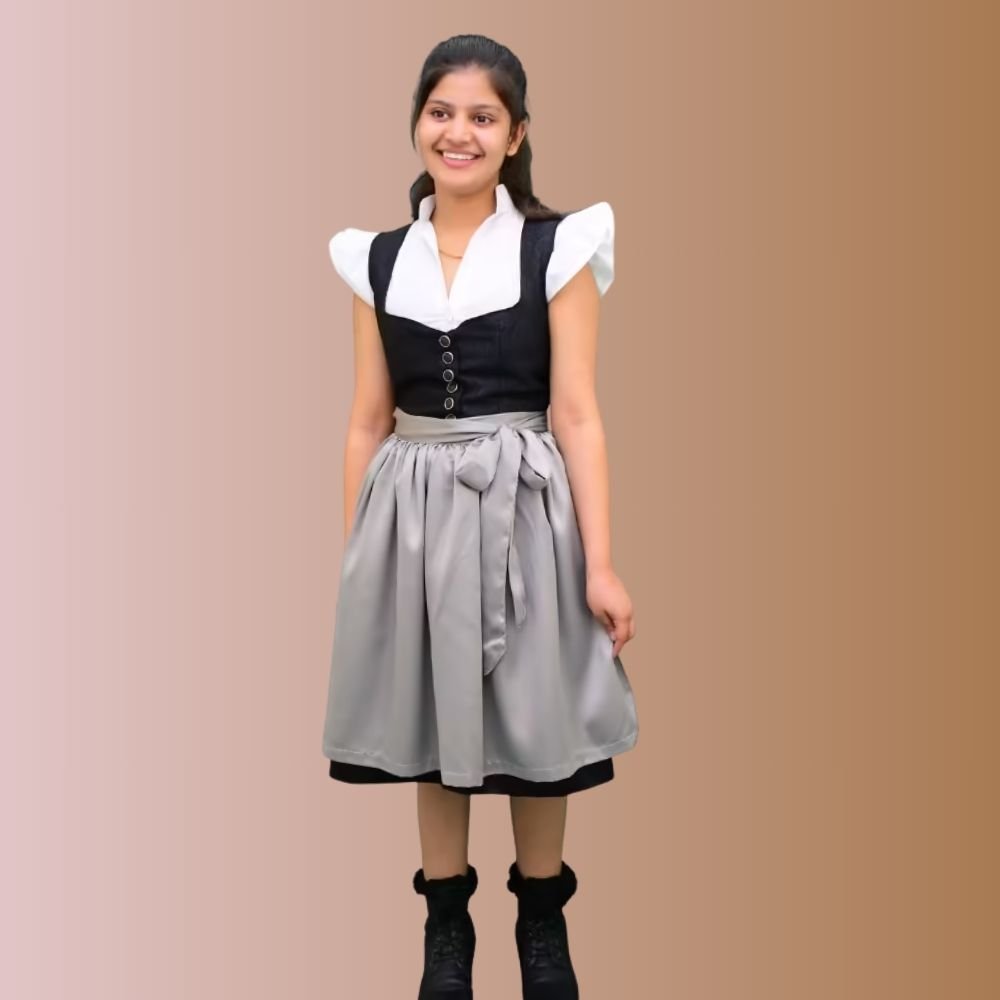Traditional German Attire: A Celebration of Heritage and Craftsmanship
Immerse yourself in the rich cultural legacy of Germany with Traditional German Attire, a timeless ensemble that embodies Alpine heritage, artistry, and pride. From the iconic dirndl and lederhosen to intricate folk costumes, these garments are more than clothing—they are symbols of regional identity, craftsmanship, and festive tradition. Whether for Oktoberfest, weddings, or cultural festivals, discover the elegance and history woven into every stitch.
Key Elements of Traditional German Attire
1. The Dirndl: A Symbol of Bavarian Elegance
The traditional German dirndl is a women’s dress rooted in 19th-century Alpine workwear. Key features include:
- Fitted Bodice: Accentuates the waist, often embroidered with floral or geometric patterns.
- Full Skirt: Flowy and knee-length (or floor-length for formal styles).
- Apron: Worn over the skirt, with placement indicating marital status (left = single, right = married, center = widowed).
- Blouse: White puff-sleeve or modern lace-trimmed styles.
Modern Adaptations: Slim-fit dirndls, metallic embroidery, and vegan leather aprons.
2. Lederhosen: The Quintessential German Attire for Men
Lederhosen (leather breeches) are emblematic of Bavarian culture:
- Durable Leather: Traditionally made from deerskin or goatskin.
- Hosenlatz: Front flap with decorative buttons.
- Suspenders: Embroidered with edelweiss, oak leaves, or Alpine motifs.
- Accessories: Pair with haferlschuhe (clunky shoes) and wool socks.
Contemporary Styles: Short lederhosen for summer, tailored fits for urban wear.
3. Folk Costumes: Regional Variations
Germany’s diverse regions boast unique traditional folk attire:
- Black Forest: Vibrant red pom-poms and elaborate straw hats.
- Swabia: Checkered aprons and embroidered vests.
- Franconia: Blue-dyed linen dirndls with white lace.
- Rhineland: Floral headpieces and silver jewelry.
Materials & Craftsmanship
| Material | Purpose | Cultural Significance |
|---|---|---|
| Linen | Summer dirndls | Breathable for festivals |
| Wool | Winter attire | Warmth for Alpine climates |
| Leather | Lederhosen | Durability for outdoor work |
| Silk | Formal embroidery | Symbolizes luxury |
Artisan Techniques:
- Hand Embroidery: Intricate floral patterns using silk or metallic threads.
- Lace-Making: Delicate trim for blouses and aprons.
- Leather Tooling: Custom designs on lederhosen buckles and straps.
Occasions to Wear Traditional German Attire
- Oktoberfest: The world’s largest folk festival in Munich.
- Weddings: Couples often don dirndls and lederhosen for ceremonies.
- Cultural Parades: Schützenfeste (marksmen festivals) and harvest celebrations.
- Folk Dances: Schuhplattler performances in traditional garb.
- Christmas Markets: Pair dirndls with woolen shawls and mittens.
Ethical & Sustainable Practices
- Local Artisans: Support Bavarian workshops preserving century-old techniques.
- Natural Dyes: Derived from plants like indigo, madder root, and walnut.
- Slow Fashion: Handmade garments designed to last generations.
How to Choose Authentic Traditional German Attire
- Check Materials: Genuine lederhosen use full-grain leather; dirndls feature cotton/linen.
- Look for Embroidery: Hand-stitched details indicate quality.
- Fit Matters: Dirndls should cinch at the waist; lederhosen sit comfortably at the hips.
- Certifications: OEKO-TEX® or “Made in Bavaria” labels ensure authenticity.
FAQs: Answering Key Questions
Q: What’s the difference between a dirndl and a trachten dress?
A: Trachten refers to all traditional German attire; a dirndl is a specific type of women’s trachten dress.
Q: Can I wear traditional attire casually?
A: Yes! Modern dirndls pair well with denim jackets, and lederhosen with graphic tees.
Q: Are there vegan options for lederhosen?
A: Yes—look for synthetic leather or hemp blends.
Q: How do I care for a dirndl?
A: Hand-wash linen/cotton dirndls; dry-clean embroidered or velvet styles.
Why Invest in Traditional German Attire?
- Cultural Connection: Honor Bavarian heritage with pride.
- Timeless Style: Dirndls and lederhosen never go out of fashion.
- Sustainability: Ethically made garments reduce fast fashion waste.
Traditional German Attire, a timeless ensemble that embodies Alpine heritage, artistry, and pride. From the iconic dirndl and lederhosen to intricate folk costumes, these garments are more than clothing—they are symbols of regional identity, craftsmanship, and festive tradition.








Reviews
There are no reviews yet.